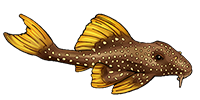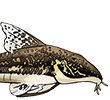This is at a higher level than catfishes alone, but provides a quick overview of catfish phylogeny.
Oliveira, C. 2025. Biodiversity, systematics, and taxonomy of Ostariophysi (Osteichthyes, Actinopterygii): what we know today after three decades of integration of morphological and molecular data. Taxonomy 5: 33.
Abstract
Ostariophysi is the second largest superorder of fishes, formed almost exclusively by freshwater species, with 102 families, 1372 genera, and 11,883 species, thus containing approximately 30% of the known fish species in the world and almost 70% of the freshwater species. Despite the great richness of species and, therefore, its great scientific and economic importance, there are still many problems related to the relationships among the internal groups of the superorder (and consequently in its classification), as well as doubts about its diversification processes and historical distribution. The group has been studied for centuries using morphological approaches that permitted the solution or proposal of several hypotheses about the origin, constitution, and distribution of the species of the group, but in the last three decades, new approaches using molecular data, including phylogenomics, have allowed the testing of hypotheses made with morphological data and, more importantly, the proposition of new hypotheses. The present study aims to review the current state of knowledge about the biodiversity, systematics, and taxonomy of the various groups of the superorder Ostariophysi, highlighting the advances achieved in recent years and discussing the problems still existing in the group.
Ostariophysi review
- Silurus
- Posts: 12479
- Joined: 31 Dec 2002, 11:35
- I've donated: $12.00!
- My articles: 55
- My images: 903
- My catfish: 1
- My cats species list: 90 (i:1, k:0)
- Spotted: 433
- Location 1: Singapore
- Location 2: Moderator Emeritus





